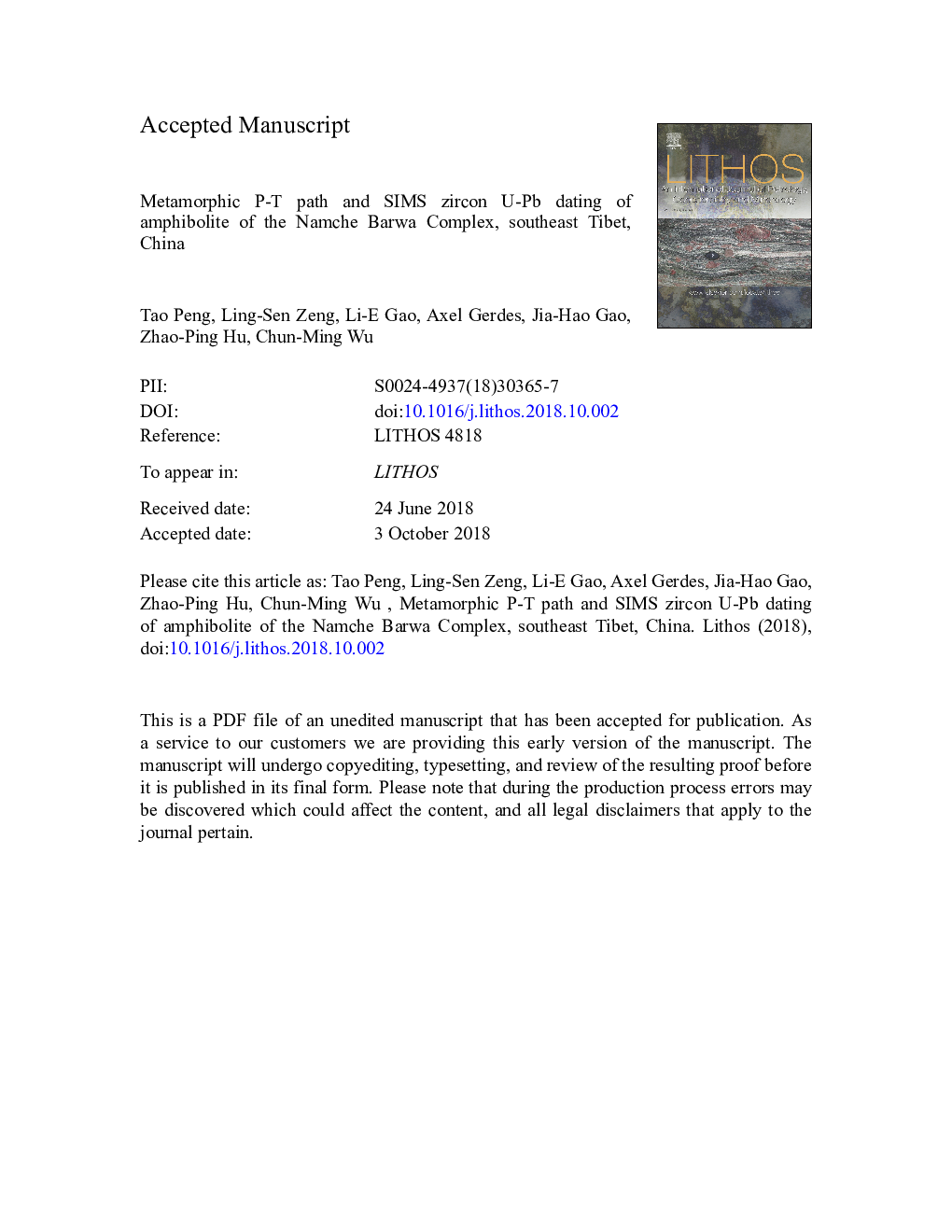| Article ID | Journal | Published Year | Pages | File Type |
|---|---|---|---|---|
| 11024653 | Lithos | 2018 | 74 Pages |
Abstract
Amphibolite from the core and the outer part of the Namche Barwa Complex (NBC), southeast Tibet, experienced upper amphibolite facies metamorphism and records clockwise metamorphic P-T paths. Prograde (M1), peak (M2) and retrograde (M3) metamorphic mineral assemblages were identified in both amphibolite types. The M2 P-T conditions in the core and outer part of the NBC are similar: Zhibai amphibolite (ZBA, from the core), ~750â¯Â°C/10â¯kbar; Paixiang amphibolite (PXA, from the outer part), 670-750â¯Â°C/ 8.5-10.5â¯kbar. SIMS zircon U-Pb dating suggests that the protolith of PXA (the outer part of the NBC) formed at ~90-80â¯Ma, similar to the mafic dykes within the Tethyan Himalaya. This magmatism is probably related to tectonic events on the northern Indian passive margin before its collision with the Eurasian Plate. Furthermore, zircon records metamorphism from Oligocene to late Miocene (~30â¯Ma to ~10â¯Ma) in the ZBA, while PXA only documents a Miocene metamorphic event (~9â¯Ma). It is inferred that from Oligocene to late Miocene, semi-continuous advection of relatively hot material from the depth might have operated only in NBC core, thus exhuming the ZBA to a shallower level, while this material did not efficiently reach/affect the PXA. At late Miocene (~10â¯Ma) rapid exhumation started to propagate to the outer part of NBC and both units were amalgamated as a coherent block.
Related Topics
Physical Sciences and Engineering
Earth and Planetary Sciences
Geochemistry and Petrology
Authors
Tao Peng, Ling-Sen Zeng, Li-E Gao, Axel Gerdes, Jia-Hao Gao, Zhao-Ping Hu, Chun-Ming Wu,
